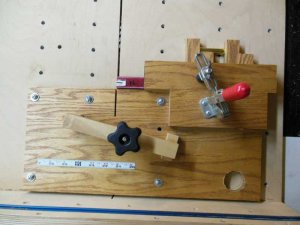donstephan
Member
Made a few wood pens a couple years ago, now making a couple dozen (black walnut, black cherry, American elm) for family and friends. After research, decided to cut my bodies about 3/16" long. I'm rough turning the bodies round, about 1/4" over diameter, before trimming to length. Even with the reduced diameter, my Whiteside pen mill body gets dull after one pair of bodies and I have to hone the long flats before using again.
So I'm wondering how long beyond the tube length more experienced pen turners will cut their pen bodies?
(For final adjustments, I really like sanding on the lathe using a turned mandrel in the drive spindle and a transfer punch in a Jacobs chuck in the tailstock. This method was presented in one of the excellent set of videos by Ed on the Exotic Blanks website. Thanks Ed.)
So I'm wondering how long beyond the tube length more experienced pen turners will cut their pen bodies?
(For final adjustments, I really like sanding on the lathe using a turned mandrel in the drive spindle and a transfer punch in a Jacobs chuck in the tailstock. This method was presented in one of the excellent set of videos by Ed on the Exotic Blanks website. Thanks Ed.)


